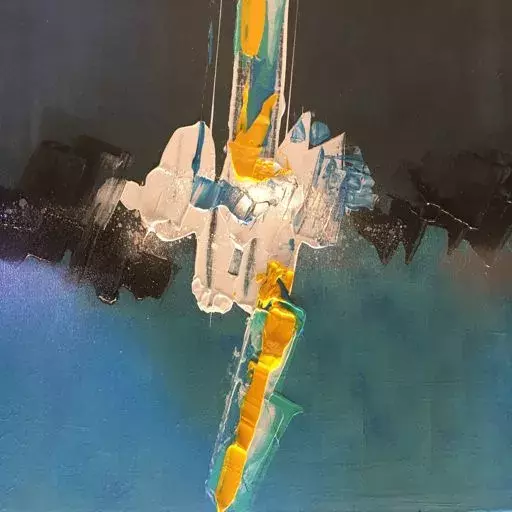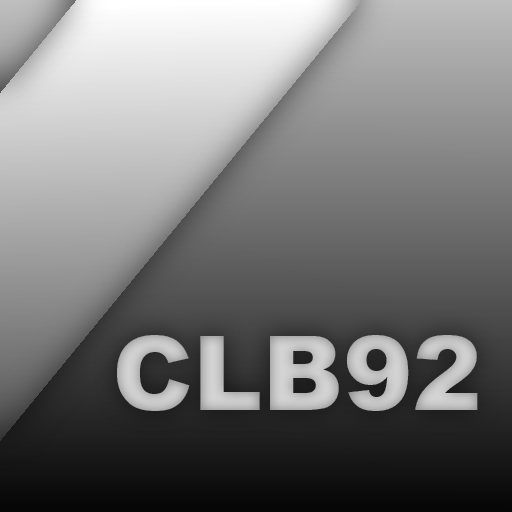Hello all, I am considering on getting a 3D printer. I want to print some stuff for a project. I am relatively new to this. I need the slicer software to be compatible (preferably open source) with linux since that’s what I am using. I have only found the stuff from Prusa to be compatible but they are expensive. I have heard of ender 3 but it is the only os printer by creality and saw the repo is 3yo without updates.
Can I get some suggestions?
Your OS doesn’t matter. Printers are dumb and only understand Gcode, which is basically a series of steps to follow for printing your part (move the head this amount in that direction while extruding that much etc.). Producing that code is the slicer’s job. What you want is a slicer that works perfectly on Linux. And good news, all open-source slicers work perfectly on Linux. What you need tho is a slicer that includes your printer’s profile.
Try Cura or Prusaslicer (available as Flatpaks) or Orcaslicer (Appimage for now but will move to Flatpak eventually).
You don’t even need a Slicer that offers a profile for the printer. I have an obscure one and had to make a custom profile, but it works fine.
I personally would recommend Cura over Prusa. They both do the same and copy each other all the time, but Cura is simpler by default imo.
I switches from Cura to PrusaSlicer a couple years back, and immediately got noticeably better prints. Both with pretty much default settings.
Have you tried cura since?
Yeah Cura feels a bit raw sometimes. I switched to Orca a couple weeks ago and although I can’t say there’s a massive difference in print quality, printing itself looked and sounded much smoother. I think Orca is more careful about acceleration than Cura.
had to make a custom profile, but it works fine.
Yes, for a person with a bit of experience that is an easy task.
It’s a bit more daunting for a newbie who is asking the sort of basic questions OP is doing
Prusaslicer is a bit more complicated than Cura but works way better once you get used to it
Most slicer software is cross platform, free and open source. The biggest ones are PrusaSlicer, Cura and OrcaSlicer. You can use all of these with lots of different brands of printers. Creality’s own slicer used to just be a slightly modified version of Cura (Not sure if their new “Creality Print” software is, but it doesn’t matter, you’re rarely tied to any specific software, at least with FDM printers). Bambu Lab Studio is not available for Linux, but OrcaSlicer is, and as far as I know it’s just an open source community edition of Studio.
In other words, you’ll have plenty of options on Linux.
Get whatever printer fits your budget and needs. You don’t have to have a prusa printer to use prusa slicer, and even if you don’t want to use prusa slicer; Cura, super slicer, and orca slicer all work on Linux natively as well. You shouldn’t have a problem with slicing software at all.
Also, as a tip, whatever printer you buy probably comes with an installer for a proprietary fork of (an old version of) one of the main slicers. Skip it. Go download Cura or prusa slicer and there will likely be profiles available during initial setup for your exact printer. Definitely if you stick to the bigger, well-known brands.
The printer is more or less separate from your PC. As several others have pointed out, you need the slicer software to create, using your PC, the file that you feed into your printer. What software your printer is running makes no difference.
And to highlight, you don’t need to use a specific company’s slicer with your printer. Lots of people use PrusaSlicer with Creality printers.
Bambu labs all the way. Unless you want your hobby to become printer maintenance.
Also unless you want to work in multiple colours and not have a giant pile of printer poop waste.
The amount of filament Bambu wastes is ridiculous.
Any multi color print is going to have waste.
I think I’m wasting a lot less filament color switching with my new X1C than I ever did with all the failed prints on my old Sidewinder X2. Nothing like checking an 18 hour print at hour 17 and finding that a corner lifted or a support toppled over from all the movement.
It’s not as much as you might think, plus you have to purge to switch filaments with a single nozzle design. I would argue my Bambu saves filament on the balance because print failure is so low.
Bambu Lab makes some affordable printers that work practically right out of the box - great for beginners, but not at the expense of being able to dig down and tweak everything should you so wish. Its slicer is available for Linux.
The printer doesn’t really matter. The slicer is what is os specific and most any slicer will work with Linux these days. It’s easier if you find a slicer with a premade profile for your printer but not a big deal. I’ve used prusa slicer for years with my printers (creality, voron, biqu, elegoo). Find a printer that’s in your budget and meets your needs then see what slicers have a profile for that. For modern printers klipper is a big plus. I just got a kobra 3 and it’s a decent machine. My ender 5 has been a workhorse but there are better printers these days. I don’t know enough about bamboo labs but they seem to be the new fad (well… sorta new now).
The Ender 3 is the printer I recommend new users get. It’s open source hardware and firmware, the devices can be found for as little as $20 sometimes. Bambu Studio, UltiMaker Cura, and PrusaSlicer, and probably loads more are all awesome slicer software that is compatible with a LARGE number of 3D printers.
more info for people leaning towards ender: ender 3’s need to have their wiring fixed by removing tinned ends from wires in screw terminals and either putting them in bare or with crimped ferrules to reduce fire hazard. The heat break should also be swapped for all/bi metal one that puts the ptfe tube out of the melt zone as it will continually degrade from the heat and lead to problems a newbie probably can’t diagnose. and the bed mounts suck, and the build plate once petg gouges it out, and the extruder when the tension arm inevitably snaps, and the list goes on…
that said I have 3 now. 2 were acquired for free. One is a switchwire conversion, one is ender NG, and the other is kevinakasam belt modded. I would recommend both mods that are not the switchwire for cost to improvement ratio.
Ender is a horrible introduction to printing far too much tinkering and manual calibration. Bambu A1 is the way to go now.
saw the repo is 3yo without updates
that’s because too many chinese companies work like this: “ooooh there’s a new toy!!” and launch a slightly different model after a few weeks, discontinuing the older ones
because their firmware is just kanged marlin, it’s possible to build&install the latest and greatest: https://marlinfw.org/docs/basics/install.html
You might want to double check this, but as far as I remember both the Sovol SV06 and SV08 are open source. The SV06 sounds in line with your desired budget, IF I remember correctly the open source thing. And as others have said, Cura, Prusa slicer and Orca are open source and cross platform.
I just got a Sovol v8, using it with orca slicer on Linux without any issues. Orca slicer has a GPL license. Sovol v8 is based on the voron v2.4 printer and sovol have released the source and 3d files for the v8: https://github.com/Sovol3d/SV08 and its firmware is based on the open source klipper firmware. So overall is quite an open designed printer. Those are the big reasons I went for it and would highly recommend it if it is within your budget (which gives you quite a lot for its cost).
But quite a lot of printers use and/or are compatible with most popular slicers of which most are open source. I think bamboo labs printers are the major one that is not open by design. Though I admit I have not been that emersed in the available printers in recent years.
Haven’t heard of them, checked it out after this comment and I think it is what I am looking for. A bit concerned about the lack of fillament detector (watched the Maker’s Muse video).
SV07 then? It’s pretty full optional, but I believe they didn’t open source the whole thing.
I have a prusa mk3 that I recently upgraded to mk4. They are expensive, but they are also super-reliable, they have great customer support, and they fully support 3rd party components. Not to mention the upgrades. After 3+ years as a mk3, the upgrade cost me about 700 EUR and it was like getting a new printer with modern specs.
You will save money in the long run, and a ton of nerves. Even if you are just looking to use it for a limited period of time, the resale value will be good.
I’d still totally recommend a used mk3s, they’re solid and simple to service, absolutely the way I went when I was in a place to start 3d printing again, their support is amazing and their knowledge base is a great reference. Stock they’re a proven machine, but they’re also a great platform for modding and there are so many mods out there.
I used mine to do all my voron parts last spring, still gets heavy usage, ended up bear modding, swapping the Rambo for a skr mini and using klipper earlier this year instead of going the 4 or 3.5 route.
I think Prusa has rested on their laurels for a few years too long. There is no way they’re worth $1k for a bed slinger when literally every comparable option is far less than half the price. Now they’re priced equivalent to stuff like the P1S or X1C without AMS even though they’re using the same construction and technology as a $150 Ender printer. CoreXY is such a major improvement that it’s not even funny.
I do appreciate the community they’ve created but the company seems to think it’s still in the 3D printer market of 2018.
Slicers for FDM are open source and lots of forks. The built-in printer profiles vary a lot but can be created from scratch. You can find lots online to use as examples too. I currently use Cura, Prusaslicer, and Orcaslicer.
I’m more interested in printing plastic than tuning/upgrading the printer itself so I recommend a printer with automatic z-offset and bed leveling. Basic maintenance tasks such as cleaning, oiling, and greasing will need to be done on occasion no matter the printer. Beyond that I’ve only done simple retraction tuning.
I started with Elegoo Neptune 3 Pro. Klipper firmware upgrade improved speeds a lot. It wasn’t bad for a budget printer but lack of automatic z-offset can be frustrating so I replaced & gave it away to friend. Replaced it with Creality K1 which was a lot easier to get started with thanks to automatic z-offset calibration. Output quality is good but to get better would require upgrades + tuning. Been saving up to replace with Bambu Lab P1S combo so I can also do multi-color printing.
I currently do all of my 3d printing from Linux. My printer is physically connected to my server, which is running Ubuntu and has a docker container running Octoprint. The container is based on Debian. The printer itself is a crappy knock-off of the Ender 3. The only issue was identifying the port I needed to pass through to the container… And by “issue”, I mean I had to run
ls -l /dev/serial/by-idand put the resulting device in thedevicesdeclaration of mydocker-compose.yamlfile.My main machine is Arch and I use Prusa Slicer as an Appimage. The only issue there is that Prusa Slicer likes to SegFault while slicing some models with some settings on my system. It’s not common, but it does happen. I think this is related to the Nvidia drivers; but, by using the Appimage it’s just the application which crashes and I can’t be arsed to spend the time to solve the issue. I also tried Cura, but ran into this bug (tl;dr: don’t use Nvidia on Linux). Overall though, it just works and I don’t really think about the fact that I’m on Linux.
For modeling, I personally use OpenScad, as I have all the artistic capabilities of a mortally wounded water buffalo. One of these days, I’ll pretend to try to learn FreeCad, which runs just fine. Blender also runs great on Linux.
In short, so long as you aren’t buying anything too proprietary, you should be just fine.
Personally using an Elegoo Mars 2 with Chitubox and I had no issues with it so far
To 3d print something you need to convert a model (.stl or something else) to gcode. A slicer will do this for you. I use Cura (it’s open source) and works great on Linux. Then you have to send that gcode to the printer. You can do that with micro SD card which is what I noramlly do or you can connect to the printer using USB cable and send the gcode using a slicer.






